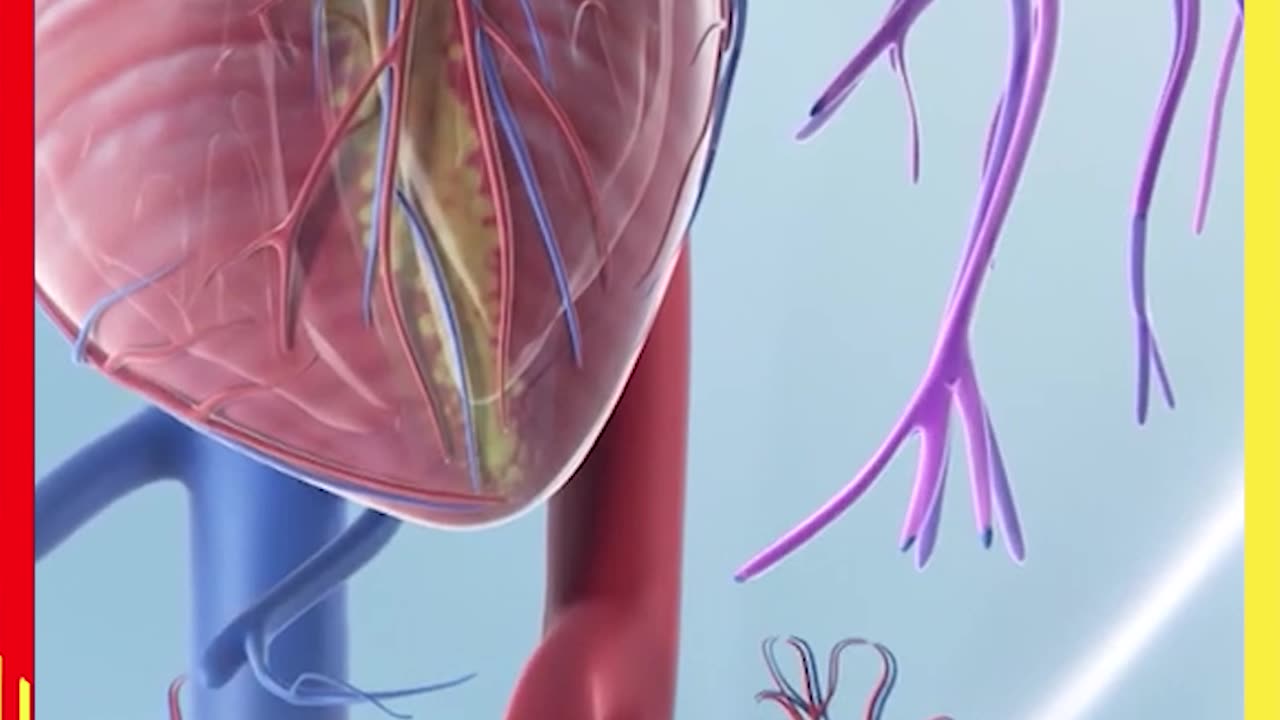Premium Only Content

Not spinach, but the human heart! What do scientists say?
Spinach Leaves Could Help Build Human Heart Tissues! Scientists Claim a Revolutionary Discovery
Spinach leaves, a simple leafy green often associated with healthy eating, may soon serve a far more sophisticated purpose—helping repair or replace damaged heart tissues. Scientists have been experimenting with an innovative technique that uses spinach leaves as a natural scaffold for growing human heart tissues, a development that could potentially revolutionize tissue engineering.
Beyond Nutrition: Spinach Leaves for Heart Tissue Repair
This may not be about which leafy greens are best for heart health when consumed, but rather about how spinach leaves might directly contribute to saving damaged hearts. Researchers have uncovered a unique role for leafy greens that goes beyond their nutritional value. They have found that the vascular structure of spinach leaves could be repurposed to mimic the blood vessels in the human body, particularly in the heart.
Breakthrough in Tissue Engineering with Spinach Leaves
The field of bioengineering has made tremendous strides, particularly with the advent of technologies like 3D printing. However, the precise replication of complex and delicate human tissues—like those found in the heart—has remained a challenge. When heart tissue is damaged, such as during a heart attack, current medical solutions are limited and often not fully effective. But researchers from Worcester Polytechnic Institute have discovered a novel alternative—spinach leaves.
The Process: Decellularization of Spinach Leaves
The technique involves a process called "decellularization." Scientists remove all plant cells from spinach leaves using chemical treatments. This process takes about six to seven days, leaving behind a transparent structure made up of the leaf's veins. This remaining structure, primarily made of cellulose, acts as a natural framework for growing new cells. Cellulose is biocompatible, meaning it does not harm the human body, making it an ideal candidate for tissue engineering.
How It Works
Once the plant cells are stripped away, the vein-like structure of the spinach leaf is utilized to mimic human vascular systems. Researchers have successfully demonstrated that fluids, including blood, can flow through the spinach veins in a manner similar to how they move through human blood vessels. This similarity in function has led scientists to believe that spinach leaves could support the growth of new heart tissues.
The Potential for Heart Tissue Replacement
In their study, published in Crossing Kingdom, the research team, led by graduate student Joshua Gershlak, highlights that spinach veins could serve as a scaffold for building replacement heart tissues. Notably, the team points out that the biological resemblance between plant vascular systems and human circulatory systems could be key to making this approach work. Cardiologists have expressed optimism, noting that this innovative method might one day enable heart tissues to regenerate more efficiently and at a lower cost.
Current Limitations and Future Prospects
While this discovery is promising, it remains in its early stages. Scientists acknowledge that much more work is needed to bring this idea to clinical use. Currently, when heart tissues are damaged, treatment options include medication and injections, which help to some extent, depending on the patient’s overall health. However, full recovery remains difficult, especially for individuals with underlying conditions like diabetes, high blood pressure, or smoking-related complications.
The hope is that using natural structures like spinach leaves will lead to better outcomes in tissue engineering. This approach could make heart tissue replacement more accessible and cost-effective in the future.
For now, scientists are cautiously optimistic, but they believe this innovation has the potential to transform the way we repair and regenerate damaged heart tissues.
-
 1:08:55
1:08:55
Donald Trump Jr.
12 hours agoGlobalist Panic & Populist Prosperity, Live with Natalie Winters & Alex Epstein | Triggered Ep229
167K105 -
 1:37:15
1:37:15
CocktailsConsoles
4 hours agoBE PART OF THE GAME!!| Death Road to Canada | Cocktails & Consoles Livestream
30.6K1 -
 1:04:29
1:04:29
BonginoReport
10 hours agoFDA Vax Pusher Needs to Look in the Mirror - Nightly Scroll w/ Hayley (Ep.16) - 03/31/2025
131K104 -
 3:27:31
3:27:31
SquallRush
1 day agoBrawlhalla Mondays!
28.1K1 -

Misfit Electronic Gaming
9 hours ago $4.48 earned"LIVE" It's So Monday So lets Perk it up. Lets Earn Gears"Party Animals" & R.E.P.O. Who will join me????
51.4K -
 54:13
54:13
Sarah Westall
9 hours agoCIA Disclosures: Ark of the Convenient, the Pyramid Code, Ley Lines & Earth’s Energy w/ Jason Shurka
97.4K23 -
 1:16:28
1:16:28
Kim Iversen
11 hours agoThere Was No COVID Virus! How We've All Been Duped By The Medical Establishment
161K324 -
 2:58:42
2:58:42
Crossplay Gaming!
6 hours agoLet's Check Out MORE Metroid Prime Remastered! (With the RTX 5090!)
47.7K3 -
 14:24
14:24
AlaskanBallistics
15 hours ago $1.65 earnedMDT HNT26 Chassis on A Remington 700 7mm Remington Magnum
39.1K9 -
 13:34
13:34
T-SPLY
11 hours agoCNN Is Now Accusing Trump Staff Of War Crimes
59.5K26